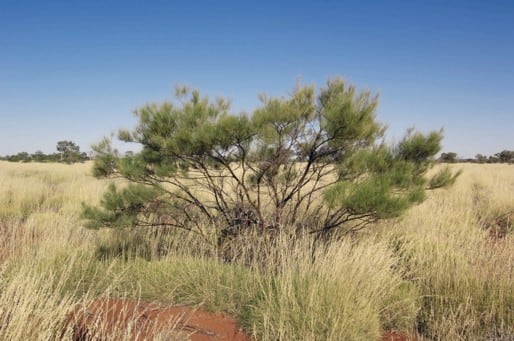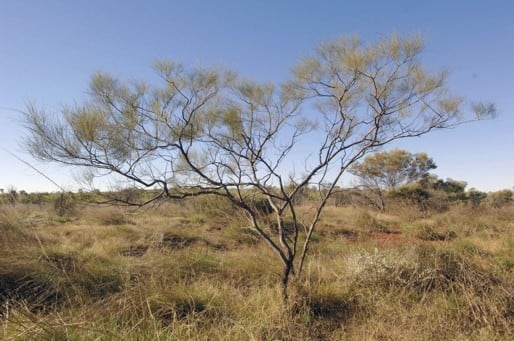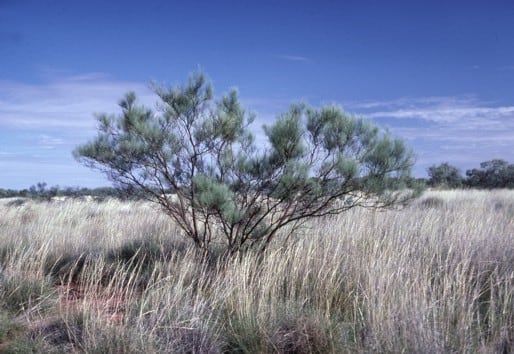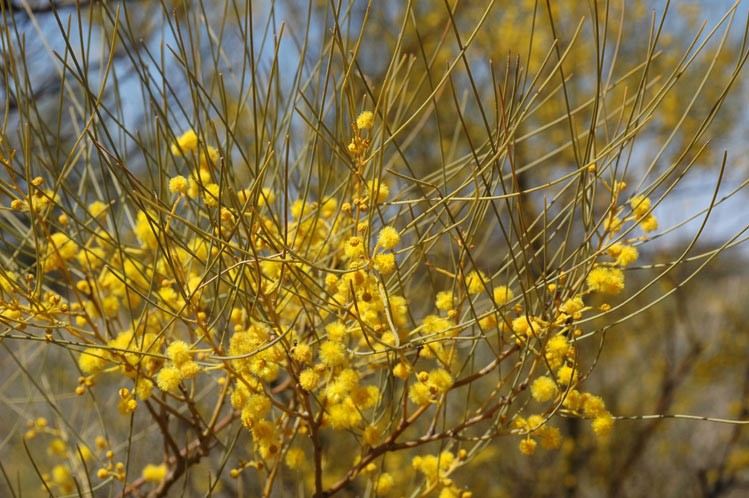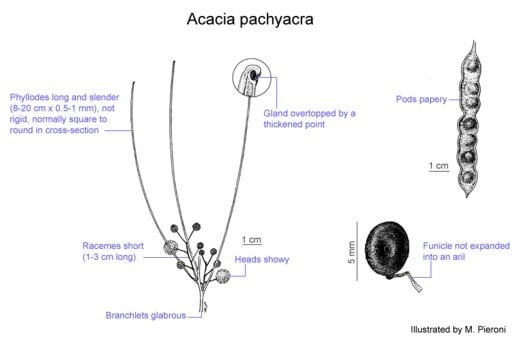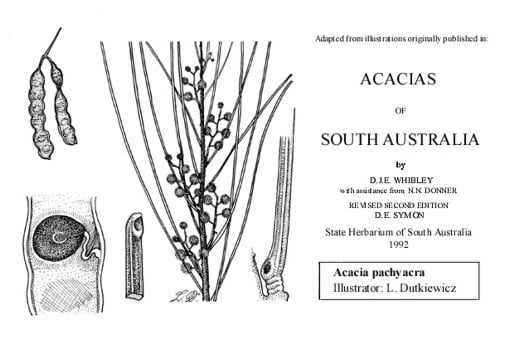Acacia pachyacra Maiden & Blakely
WATTLE
Acacias of Australia
Family
Fabaceae
Distribution
Occurs in the western part of the arid zone from Mt Farquhar, W.A., to the Docker R. area, N.T., and the Birksgate and Musgrave Ra., S.A.
Description
Shrub or tree 1–5 m high, often bushy with a casuarina-like appearance. Branches frequently red-brown. Branchlets slender, sometimes faintly (rarely markedly) pruinose, glabrous. Phyllodes ascending to erect, filiform, straight to shallowly curved, quadrangular to ±terete, rarely flat, 8–20 cm long, 0.5–1 mm wide, with a curved mucro with a gland at its base, not rigid, slightly longitudinally wrinkled or grooved when dry, light green to grey-green, glabrous, 4-nerved; glands basal, and at base of mucro. Inflorescences racemose; raceme axes 1–3 cm long, slender, glabrous; peduncles 4–7 mm long, slender, glabrous; heads globular, 20–30-flowered, light golden to mid-golden. Flowers 5-merous; sepals free, linear-spathulate. Pods narrowly oblong, prominently rounded over seeds, to 8 cm long, 7–11 mm wide, chartaceous, light brown, glabrous. Seeds transverse to oblique, oblong to widely ovate-elliptic or orbicular, 4.5–5.5 mm long, shallowly depressed at centre, dull, black, exarillate.
Phenology
Flowers Aug.–Oct.
Habitat
Grows in sand in spinifex country. Acacia pachyacra is a disturbance opportunist and responds particularly well after fire.
Specimens
W.A.: near Mt Farquhar, J.V.Blockley 437 (PERTH); Gibson Desert, 110 km by road S of Warburton towards Rawlinna, B.R.Maslin 5682 (MO, PERTH). N.T.: 51 km E of Docker R., N.Henry 301 (PERTH). S.A.: 11 km S of Mt Davies camp, Tomkinson Ranges, J.R.Maconochie 817 (AD, K, PERTH).
Notes
The seed is eaten by Aborigines, fide P.Latz, Bushfires & Bushtucker 112 (1995).
A member of the ‘A. murrayana group’ with phyllodes very similar to those of A. subrigida. Perhaps A. pachyacra would be better regarded as a subspecies of A. murrayana from which it is (rather arbitrarily) distinguished by its narrower phyllodes which are normally quadrangular to ±terete. A few specimens from far north western S.A. and adjacent N.T. with ±flat phyllodes 1–1.5 mm wide seem intermediate between the two species, e.g. 51.5 km E of Docker R. Settlement, C.Dunlop 1968 (PERTH). Typical representatives of both species also occur within this region. May superficially resemble A. tenuissima but the two are not at all closely related; A. tenuissima has finely multinerved phyllodes, spicate inflorescences and much narrower pods.
Acacia pachyacra has the ability to resprout advantageously from the base of the stem after mechanical disturbance and after a mild. This species would make a showy ornamental for inland gardens.
FOA Reference
Data derived from Flora of Australia Volumes 11A (2001), 11B (2001) and 12 (1998), products of ABRS, ©Commonwealth of Australia
Author
Minor edits by B.R.Maslin
B.R.Maslin
This identification key and fact sheets are available as a mobile application:
URL: https://apps.lucidcentral.org/wattle/
© Copyright 2018. All rights reserved.
